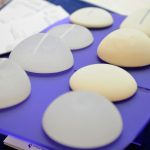Education
David J. Schleich, PhD
For more than a century, naturopathic medicine has been building a caregiver profession predicated on relationship and characterized by careful communication. There are the communication pathways, of course, related to charting, summaries, test analyses, and the like. There are also patient stories.
Not wanting to be purveyors of what Foucault called the “medical gaze” (treating the body and not the person), naturopathic doctors have long held the space where stories from the biopsychosocial dimensions of the patient’s life are valued and their expression welcomed. At the same time, in the literature of professional formation, we have often seen concerns pointed out in studies of orthodox medicine outcomes and practice which can be described as the fragmentation of the clinical experience, the impersonal nature of bureaucratic decision-making processes about healthcare choices, and the loss of individuality in the patient encounter. Essentially, these types of issues are all about not only the autonomy and uniqueness of the patient, but also about relationship and time spent. In such a terrain, the potential for a costly divide between the doctor and the patient crops up more often than providers would want. Naturopathic doctors – long the placeholder profession for biopsychosocial, patient-centered medicine – have championed empathic engagement since Lust and others systematized its modalities and approach back at the beginning of the 20th century.
The governance and reimbursement structures of mainstream medicine accumulated to a point where an ACA (the Affordable Care Act) was needed to build better therapeutic alliances between the doctor and the patient and to weed out the rotters who were taking too much from a heavily commodified system of diagnosis and care. As issues of affordability and access ricochet all around and through the patient’s experience of illness and the approach to treatment itself, doctors are often straightjacketed by reimbursement and protocol systems which are accompanied by contentious notions such as preexisting conditions and calamitous health events. In the middle of all this fuss and rattle, the patient’s story can’t easily come into focus and stay crisp. Only when there is such clarity, as Rita Charon, MD, PhD (a PhD in English who also became an MD), puts it, “… can the physician hear—and then attempt to face, if not to answer fully—the patient’s narrative questions: ‘What is wrong with me?’ ‘Why did this happen to me?’ and ‘What will become of me?’” (Charon, 2001)
In the mainstream health system, there is often urgent financial reckoning occurring throughout the transaction, especially given the strictures and cascade of insurers and providers. The very human story of the patient’s illness risks being diluted along the way. Naturopathic care, though, has historically been successful in overcoming this worrying interface because of its long history of patient-centered care, where stories of illness not only nourish empathy, but embody the difference between treating disease and treating the patient; eschewing, thus, the “medical gaze.”
The Origins of Narrative Medicine
A decade ago, Columbia University got busy improving allopathic clinical practice by providing training focused on renewed attention to patients in the form of attentive listening, coupled with what the designers of its “narrative medicine” program called “creative contact, singular accuracy, and personal fidelity.” Other elements that are presented for adoption by allopathic students in the curriculum of that longstanding Columbia University program include familiar naturopathic skills, such as “empathic interviewing, reflective practice, narrative ethics, self-awareness and intersubjective contact.” (Columbia University, 2018). The champion of that initiative was Dr Rita Charon.
Dr Charon introduced the notion of narrative medicine back at the beginning of the new century. She explained at the time that it was, essentially, “a model for humane and effective medical practice.” She writes,
Adopting methods such as close reading of literature and reflective writing allows narrative medicine to examine and illuminate 4 of medicine’s central narrative situations: physician and patient, physician and self, physician and colleagues, and physicians and society. – (Charon, 2001, p.1897)
In 2009, Columbia University partnered with the revered Canossiano Institute in Venice to teach medical doctors and nurses and other biomedicine professionals how to “nourish empathic doctor-patient relationships,” to “replace isolation with affiliation,” and to establish “patient-centered and life-framed practices.” Sound familiar? Naturopathic doctors, deeply rooted in humanistic health care, have been predicating their clinical programs on just such a personalized approach for a very long time. That particular Columbia–Canossiano workshop attracted US and European medical credits. Presenters were from Columbia, the University of Toronto, George Washington University, Technion in Haifa, and the University of Milan. Its value was recognized immediately and has persisted. Not surprisingly, the biomedicine profession did not invite presenters from what in those days were labeled as the “CAM professions.”
These days Columbia has continued its pioneering Master of Science degree in narrative medicine. Their program includes narrative writing, reading, literary and philosophical analysis, coupled with practicums which include practitioners and patients. As Charon suggests, the whole idea is to “draw on the study of art and literature to enhance students’ listening and observation skills and to expand their view of patients to encompass more than just medical histories.” (Krisberg, 2017)
A few years later the University of Iowa sponsored a conference in the same vein, called “The Examined Life.” Participants assembled to explore “links between the science of medicine and the art of writing.” The elements explored have been central to naturopathic care for decades (ie, human interaction, information and education, the presence of loved ones/friends and social support in the healing journey, spirituality and inner resources, the importance of human touch, the nutritional and nurturing aspects of food, and an ambience that is often personal and inspiring). Additionally, workshops focused on thoughtful listening, nurturing talking, and meaningful time spent with the patient. Some elements of this narrative road to empathy have migrated into messaging as part of the “integrative” and “functional” medicine sectors in contemporary allopathic medicine. There are critics of this humane face on medicine who worry that narrative medicine is an aspect of assimilation at work.
Narrative Medicine as Co-optation
In that regard, some contend that narrative medicine is more evidence of an accelerating co-opting of the essence of the natural medicine professions, or at least of the more human face of a more holistic medicine. Narrative medicine, whatever its patina, is emerging more and more in the front lines of the biomedicine landscape. Because the alternative (what naturopathic doctors do) is chunking into turf and market share, increasingly MDs are encountering well-informed patients who want more than 7-minute prescriptions, emotional distance, and more tests.
The biomedicine terrain has been described by those excluded from its orthodoxy as compressed, characterized by quantified time allocations per patient, embarrassed by the uninsured, scourged by the tangle of rules for the insured, dominated by HMOs, and contained by reductionist medical reasoning which “blindly follows statistical likelihoods, regardless of variations such as age, sex, ethnicity, or individual psychologies.” (Charon, 2006) Dr Charon, the principle architect of “narrative medicine,” has articulated over many years a strategic communications approach for the biomedicine profession that seeks to warm up that landscape. She teaches that clinicians need to “develop a sturdy and clinically useful affiliation with the one who suffers.” In such a universe, the MD is a “witness” and not a “judge,” a “companion” and not an “interrogator.” Were Dr Charon to have had an interprofessional framework for her original research and development, I’m certain she would have found naturopathic physicians to be keen, accomplished, long-time practitioners of such empathy.
Charon adds that “narrative medicine had its start in … patient-centered care and medical humanities” (2006). In an allopathic universe, doctor time is expensive (time spent must be quantifiable); insurance, pharmaceutical companies, and health networks – despite presenting themselves in the community as non-profits – are caught in a profit equation; biomedicine students learn quickly that emotional attachment can hurt; and medical training for the longest time objectified the patient enough that Patch Adams got famous satirizing the alienation.
The idea is, in her words, that by really listening to the patient (ie, more than a few moments), the doctor can “receive in full complexity what the patient conveys in words, silences, gestures, positions, and physical findings.” (Charon, 2008) Charon further suggests that doctors who possess “narrative competence” are able to “bridge the divides of their relation to mortality, the contexts of illness, beliefs about disease causality, and emotions of shame, blame, and fear.” (2006)
This isn’t just some lingering byproduct of, say, Angelica Thieriot’s earlier Planetree Alliance approach, transformational as that remarkable nonprofit’s 100-plus-hospital-strong organization from Derby, CT, had been in the fuss and rattle of the hospital business in America back in the day. Rather, the advent and spread of narrative medicine education signals awareness of the consequences of decades of treating patients impersonally and a century of understanding their presentations through the limited reductionist lens.
Frankly, naturopathic doctors know narrative medicine. They have always understood what they’re doing as a relationship. In the initial intake and well beyond, naturopathic doctors relate to their patients as individuals, as persons, rather than being obliged by paradigm to gather in detail in a rush to diagnosis, assign a test battery or zip through charts of data and findings, refine a prognosis, or interpret and further diagnose variations. The health insurance companies don’t much like the relational approach of the ND because the time it takes is hard to run a tab on in terms of immediately quantifiable and prescriptive outcomes. Charon puts it this way: “. . . practitioners, be they health care professionals to begin with or not, must be prepared to offer the self as a therapeutic instrument” (2008, p.215).
The narrative medicine model brings to mind Tiffany Field’s “therapeutic touch” (established 30 years ago at the University of Miami School of Medicine) or Wayne Dyer’s notion from a few decades back that intention is a “force in the universe” to which everyone and everything is connected. Biomedicine communicators, in any case, can learn handily from naturopathic doctors because of the expansion of integrative and interprofessional arrangements these days. The fellows in the AIHM (Academy of Integrative Health & Medicine) program, for example, see reflected in action in the clinics of natural medicine providers, standards of patient-centered care which the naturopathic medical education community presents seriously in its curricula and which routinely characterize how naturopathic doctors relate to their patients.
Rita Charon’s work has been widely recognized. She has received honors from numerous groups, such as the Association of Medical Colleges, the American College of Physicians, the Society for Health and Human Values, and the Society of General Internal Medicine. Just after the 2009 Columbia workshop referenced earlier, a related June 2011 workshop at the university filled right away and had a waiting list. As interest continued to spread, the University of London’s School of Advanced Study Institute of English Studies held there a conference, also in 2011. The theme, of all things, was the use of “comics in medical and public education and their role in health communication and scholarship.” Back then, there was much momentum about and around narrative medicine, and it continues.
Important to note, from the point of view of curriculum design, is that Columbia’s “Narrative Medicine master’s program” recruited in the humanities and social sciences, organizing their curriculum to “educate a leadership corps of health professionals” who understand the “intimate, interpersonal experiences of the clinical encounter.” (Charon, 2001) They have attracted professionals from numerous clinical fields to learn more about becoming “narratively competent clinicians.” They are building “a different kind of caregiver,” not unfamiliar to the naturopathic community.
The “narrative medicine” initiative also took root a decade ago at the New York-Presbyterian Hospital/Columbia, where resident, Dr Abigail Ford, said, “Narrative medicine changed my entire approach to medicine. As a doctor you are really a co-author of patients’ experiences and need to hear their story and take it on.” (New York Times, 2008). Other residency programs, such as at Vanderbilt University’s Department of Surgery, soon followed a similar path. And, there are many more such examples which persist into the closing years of this decade. At the University of Nevada School of Medicine, for example, medical students can benefit from narrative medicine as a concentration or as an elective in fourth year. Temple University launched a narrative medicine program in 2016. At the Warren Alpert Medical School (Brown University), students can take a narrative medicine course too. Even the legendary Kripalu Center for Yoga and Health is presenting this very year a conference entitled “Narrative Medicine: A Cutting-Edge Approach to Healthcare,” featuring Natalie Goldberg, among others. Seminar breakout groups abound now on such topics as: Psychoanalysis and Narrative Medicine; The Therapy of Writing: An Analysis of Medical Prose in JAMA; and A Perspective on the Role of Stories as a Mechanism of Meta-Healing.
Healing the Gap
Essentially, “narrative medicine” adds back into the transaction between caregiver and patient the relational, respectful dimensions which biomedicine bleached out of the assembly line of the health business, prior to and after Flexner. It is a curriculum and communication technique that constitutes what Cooke et al mean when they describe the need for a “synthesis of the cognitive and moral aspects of professional work” (2010, p.ix). Cooke and her colleagues, in that important Carnegie Foundation centennial treatise, Educating Physicians: A Call for Reform of Medical School and Residency [published one century after Flexner], take great care to delineate the “poor connections between formal knowledge and experiential learning and inadequate attention to patient populations, healthcare delivery, and effectiveness” (p.3). Cooke saw this need as manifesting not only in thorough reports of disease symptoms at the expense of listening for and hearing about the patient’s life and feelings, but also in the steep shift in careers of procedural specialties rather than primary care.
The debate strengthens these days about how belief cannot just be biology in medicine and in people’s lives. As Fosse (2002) puts it: “How can macroscale phenomena like thoughts and feelings be shown to exert downward causal influence over microscale phenomena like biological processes?” (Fosse, 2002, p.8). Narrative medicine is the tip of an iceberg in this sea of transformation about what constitutes “health” and what the physician’s role in it must be.
Narrative medicine needs to welcome a broader discourse and critical reflection about the structural inequities in the American healthcare system. Narrative medicine is part of a growing awareness that health professionals need to incorporate patients’ life stories – including their unique underlying value system – into medical treatment options that fit each individual. Narrative ethics refers to how a doctor listens for, and hears, more than a report of disease symptoms. Narrative medicine, reflectively practiced, encourages shared, ethical decision-making regarding the patient’s care, particularly at the end of life. It balances treatment options between the belief systems and life of the patient, and the technological possibilities advocated by the doctor. Ideally, whatever the treatment goals, narrative medicine’s own narrative is that those goals should be in harmony with the way the patient has lived his or her life through the beginning and middle and end. Narrative medicine is a special tool serving to achieve that.
References:
Charon, R. (2001). The patient-physician relationship. Narrative medicine: a model for empathy, reflection, profession, and trust. JAMA, 286 (15), 1897-1902.
Charon, R. (2006). Narrative Medicine: Honoring the Stories of Illness. Oxford, England: Oxford University Press.
Charon, R. (2008). Narrative Medicine Creates Alliance with Patients. Medscape Ob/Gyn & Women’s Health. Available at: http://www.medscape.com/viewarticle/520704. Accessed April 22, 2011.
Columbia University. (2018). About Narrative Medicine. Available at: https://www.narrativemedicine.org/about-narrative-medicine/. Accessed January 14, 2019.
Cooke, M., Irby, D. M., & O’Brien, B. C. (2010). Educating Physicians: A Call for Reform of Medical School and Residency. San Francisco, CA: Jossey-Bass.
Foss, L. (2002). The End of Modern Medicine: Biomedical Science Under a Microscope. Albany, NY: SUNY Press.
Krisberg, K. (March 28, 2017). Narrative Medicine: Every Patient Has a Story. Association of American Medical Colleges Web site. https://news.aamc.org/medical-education/article/narrative-medicine-every-patient-has-story/. Accessed January 14, 2019.
Chen, P. W. (October 23, 2008). Stories in the Service of Making a Better Doctor. New York Times Web site. http://www.nytimes.com/2008/10/24/health/chen10-23.html. Accessed April 22, 2011.
 David J. Schleich, PhD, is president and CEO of the National University of Natural Medicine (NUNM), former president of Truestar Health, and former CEO and president of CCNM, where he served from 1996 to 2003. Previous posts have included appointments as vice president academic of Niagara College, and administrative and teaching positions at St. Lawrence College, Swinburne University (Australia) and the University of Alberta. His academic credentials have been earned from the University of Western Ontario (BA), the University of Alberta (MA), Queen’s University (BEd), and the University of Toronto (PhD).
David J. Schleich, PhD, is president and CEO of the National University of Natural Medicine (NUNM), former president of Truestar Health, and former CEO and president of CCNM, where he served from 1996 to 2003. Previous posts have included appointments as vice president academic of Niagara College, and administrative and teaching positions at St. Lawrence College, Swinburne University (Australia) and the University of Alberta. His academic credentials have been earned from the University of Western Ontario (BA), the University of Alberta (MA), Queen’s University (BEd), and the University of Toronto (PhD).





